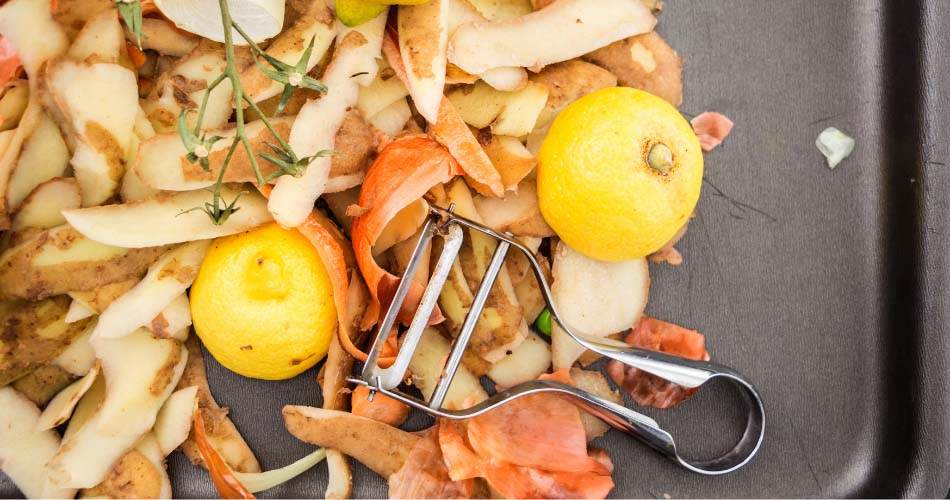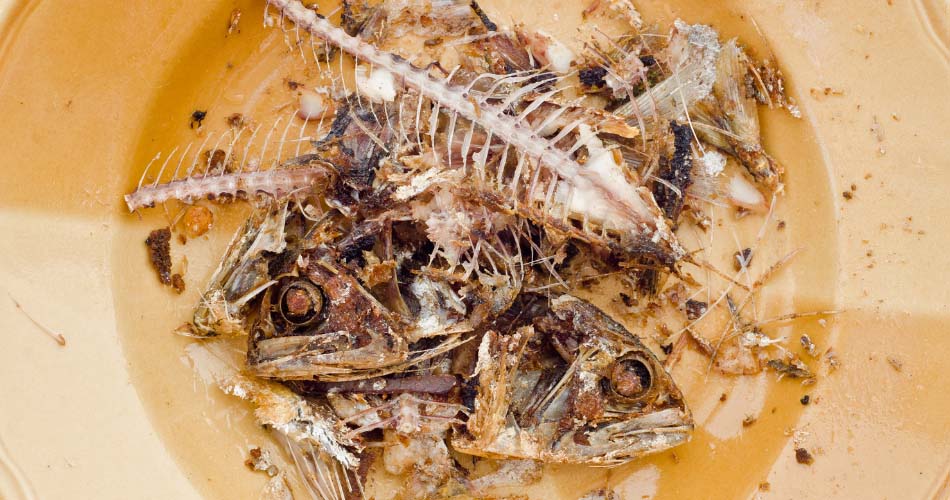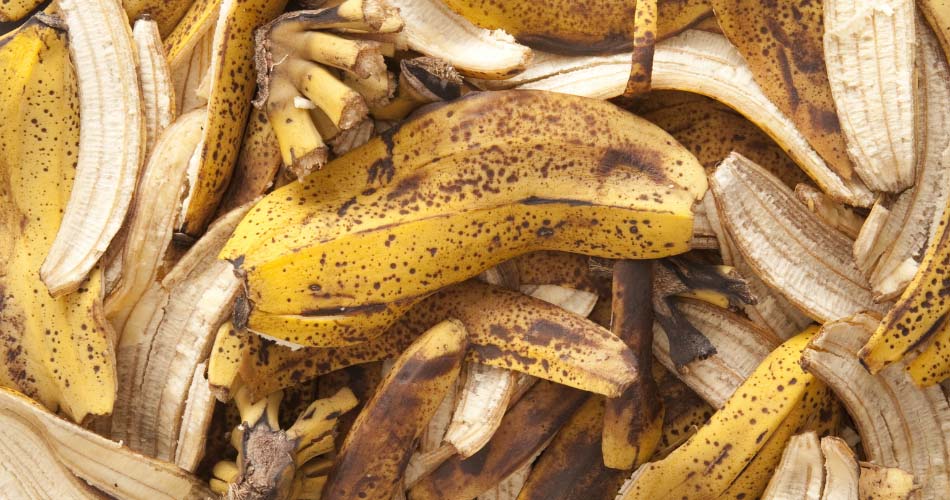
Have you ever wondered what happens when you bury kitchen scraps in the garden? Well, today we are here to reveal the mystery and share with you the results! Self-sufficiency has come to another level! It’s time we see what happens after kitchen scarps have been buried in the garden for some period of time. Not only that but we’ve also prepared some insights on what other things you might find interesting to bury because there are fascinating results as well. Things like fish heads, chickens, or even leftover meat. Let’s find out!
Usually, when we are talking about kitchen scraps and gardening, we instantly think of compost piles, compost bins, worm farms, or even feeding the animals. These are all good, we agree! But there is one more thing that is an even more eco-friendly way to recycle kitchen scraps. Not to mention the easiest method! Why is that? Well, all you as a self-sufficient homestead have to do is bury the leftovers in the garden! No extra effort is needed! This is actually a method that has been popular for many years. 30-40 years ago it was a method used by most homesteads because it was and still is – practical. It is an easy way to save space from garbage but also to enrich the garden itself.
How does this process with kitchen scraps really work?

Recycling kitchen waste? Aren’t there better methods? These questions you might ask! And as stated above, yes you might find compost bins and piles a better solution, but actually, burying kitchen scraps in the garden is some of the best things you can do with the waste! You can turn your whole garden into a recycling area!
And while we strongly recommend burying scarps in the garden, there are still some things to keep in mind when doing so. First, you should bury the kitchen scraps down to 20 to 40 centimeters so that there is enough soil on top so that there is enough space for subsequent vegetables to grow. Be careful not to bury too much kitchen waste in one bit. This might overwhelm the garden area and the results won’t be as pleasant as you hoped. Also, you do need a fair size garden or you will run out of space quickly!
Think of your garden as a huge worm farm and by burying your kitchen scraps you are feeding all those worms. And they don’t just eat, they also produce their own waste such as worm poop, worm juice, and digestive liquid. These elements are perfect for providing the nutritions your plants need. The best thing about this method (besides planting on top of a worm farm) is that you can actually bury any kitchen scraps! Not only fruits and vegetables are suitable, but also meat and bones. However, be careful with the last ones as you don’t want to plant too big of a quantity of them. It will only lead to an unpleasant smell or if you have a dog, it might find it quite pleasant and dig up the leftovers.
Fishheads and fishbones

Many gardeners are known to worship this method of burying fishbones as it leads to a thriving garden. And we are only supporting them with this know-how. Burying fishbones helps with growing tomatoes, for example. If you bury a big fishhead a foot down, and then on top of it you start seeding tomatoes, it will grow as something you haven’t seen before!
Corncobs and banana peels

Another particular kitchen waste you can use to enrich the soil in your garden is banana peels and corncobs. If you experiment and try burying banana peels in your garden, as soon as 4 to 5 weeks, you’ll quickly see that they are already eaten by worms and this affects the soil where your other vegetables and plants are growing. For example in an area with onions, add a few centimeters down banana peels you used when cooking or eating bananas, and soon you’ll see the big effect it has on growing those onions.
The same goes for corncobs. In another area, dig down a hole and add old corncobs leftovers and bury them. If you check what’s happening in a few weeks, for example, 3 to 4, you’ll see the cobs have turned hollow and the worms have eaten them inside, making holes. This is pretty fast for a corncob! This means in just a few weeks you are helping your soil flourish extremely!
Take care of your garden

Whether you simply use kitchen scarps to extra fill the soil, you’ll still encourage the worms and it will affect it greatly. Don’t forget the best soil is the alive one, so make sure you keep it always awake by feeding it simply with kitchen leftovers and waste.
Except for banana peels, corncobs, fishbones, and old veggies, you can also try burying coffee grounds, eggshells, nutshells, or even old bread. Some of this waste not only helps enrich the soil for growing new vegetables but also for flowers. Eggshells are known to be a powerful addition to growing flowers even in a pot.
To have a well-fertilized soil, use the method of disposing of items you have left from cooking you you weren’t able to eat in time. Kitchen scraps and leftovers shouldn’t go to the trash! They can truly help you enrich your garden and you’ll be fascinated by the results.
To be sure you are properly applying this method, make sure you divide your garden into different parts. Think of each zone as separate and bury different kinds of waste so that you can follow the process and check the different results it will lead to. This way you’ll know what works for you and what to continue doing. Also, it will help you keep track of how many scraps you are burying (you don’t want to overdo it).
We hope all of those tips and tricks answer your question of what happens when you bury kitchen scraps and also inspires you to also try it in your own garden!

Hi Greg!
I love getting your emails! I have a question though. When burying your kitchen scraps in your garden, should this be done while the garden is growing? Would this affect the root system by digging around the vegetables in order to bury the scraps? Is this safe to do for root crops such as beets and sweet potatoes?
Hi Donna, thank you so much! You can bury your kitchen scraps while the garden is growing but make sure you do it between the plant rows. This way, you will give them extra nutrients. If you have empty spaces or garden beds, I recommend you bury the scraps there and wait for about 6 weeks before planting so the leftovers have a chance to compost.
Very interesting details you have remarked, regards for putting up.
Glad you like it!
Most of whatever you mention happens to be astonishingly legitimate and that makes me wonder why I had not looked at this in this light before. This article truly did switch the light on for me personally as far as this particular topic goes. However at this time there is one particular point I am not really too comfy with and whilst I make an effort to reconcile that with the actual core idea of the point, allow me observe just what all the rest of your subscribers have to say.Well done.
Thank you! I’m glad you like my articles and find them useful. What is the point you’re not comfy with?
It seems to me this idea means it’s important to somehow mark the rows in your garden and keep them marked year round. How do you recommend marking rows so their area is known? I’ve used popsicle sticks
but they don’t last. Also I’ve heard it’s important to vary your crops. For example, farmers will plant in a certain area they’ve grown one thing mostly then leave it fallow or change a complimentary crop that will regenerate the soil that may be depleted and needs renourishing. Did I explain myself well enough?
Hi Cynthia! Yes, people have been doing this for centuries to nourish the soil and ensure the crop is rich. I usually use wood sticks to mark the rows in my garden, 2×2, 1-foot-long. They have worked well so far, but I make new ones yearly.
Some truly great posts on this internet site, appreciate it for contribution. “Better shun the bait, than struggle in the snare.” by John Dryden.
Thank you so much! I’m glad you like my blog! 🙂
Been doing it for 60yrs
Wow, that’s amazing, Rita! Thanks for sharing!
I have been doing a combination of compost and scrap burying in my garden. It works well! Thank you for giving it a little more info.
You must grow really tasty food, Ehren 🙂 I’m glad you like the article!
Thank you for sharing excellent informations. Your web-site is very cool. I’m impressed by the details that you have on this blog. It reveals how nicely you understand this subject. Bookmarked this web page, will come back for extra articles. You, my friend, ROCK! I found just the information I already searched all over the place and simply couldn’t come across. What a great site.
Thanks! I appreciate it!